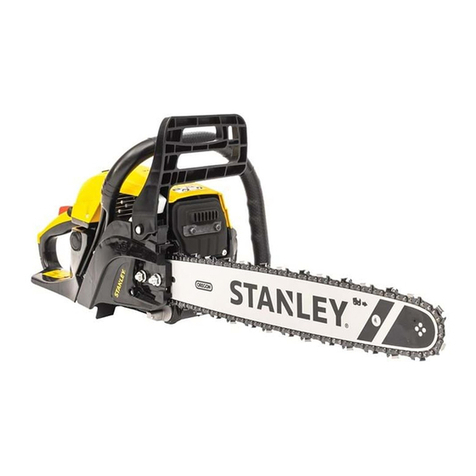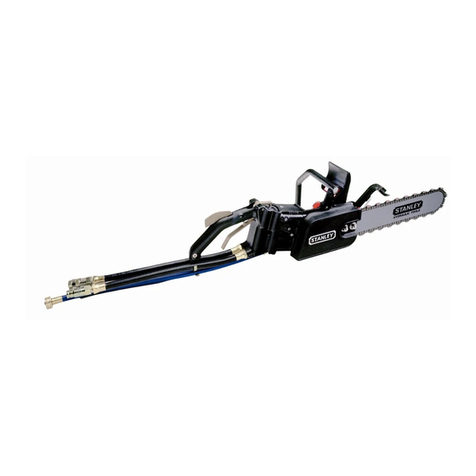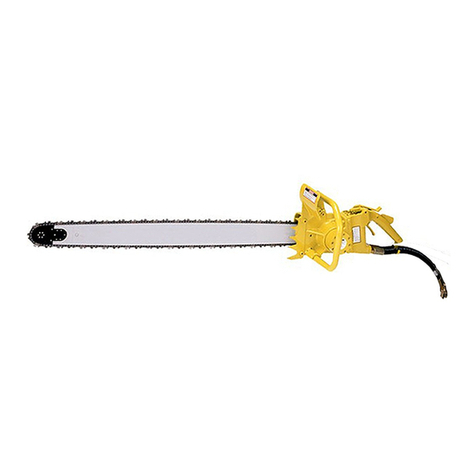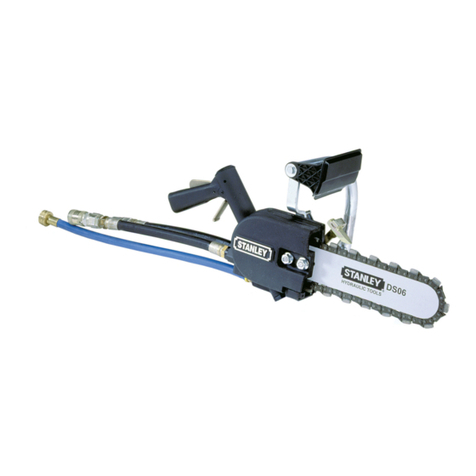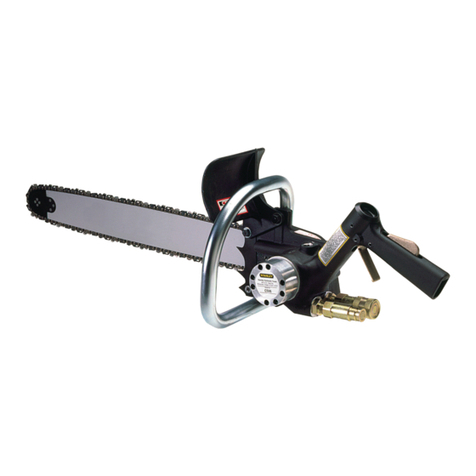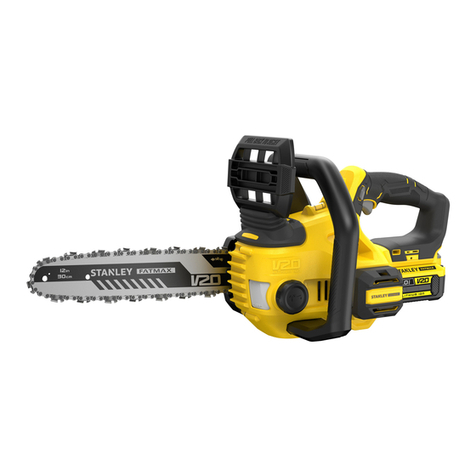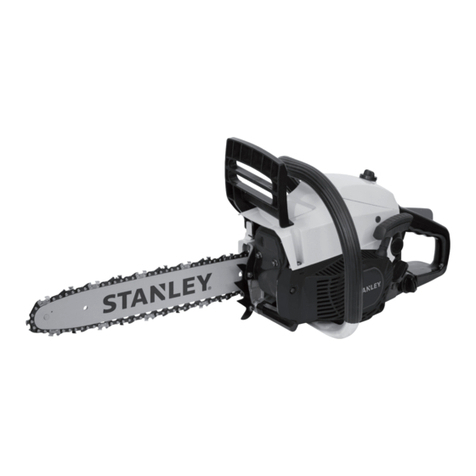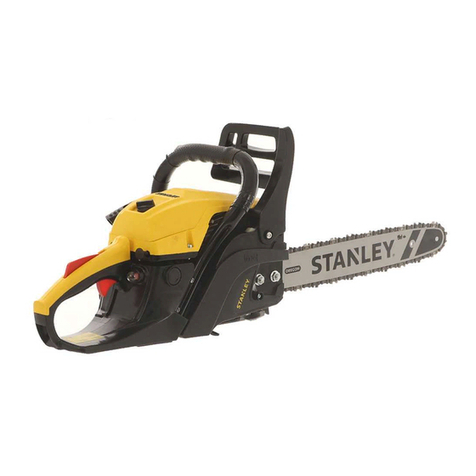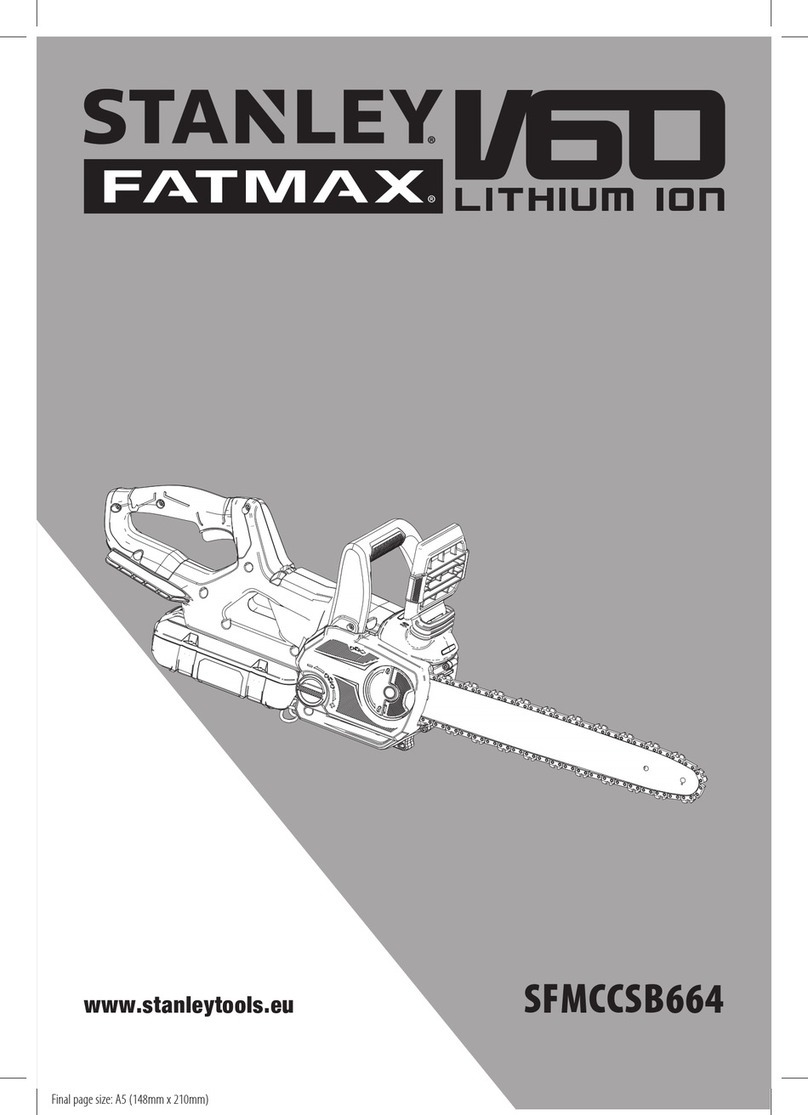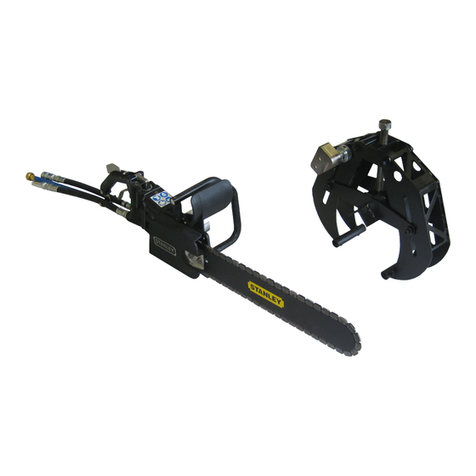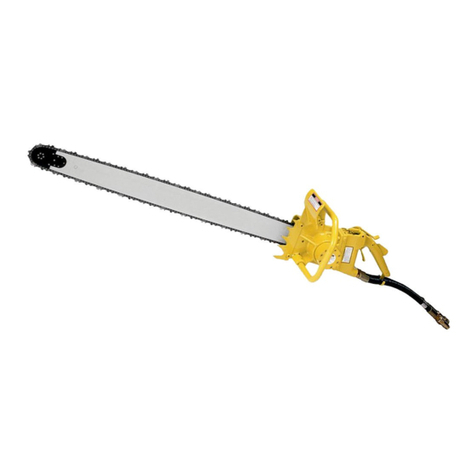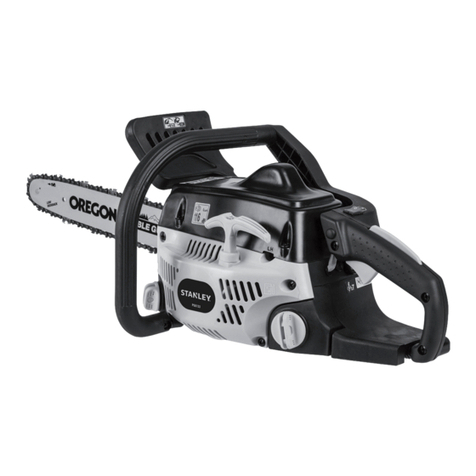
10
The safety tag (p/n 15875) at right is attached
to the tool when shipped from the factory. Read
and understand the safety instructions listed on
this tag before removal. We suggest you retain
this tag and attach it to the tool when not in use.
TOOL STICKERS & TAGS
DANGER
IMPORTANT
READ OPERATION MANUAL AND
SAFETY INSTRUCTIONS FOR THIS
TOOL BEFORE USING IT.
USE ONLY PARTS AND REPAIR
PROCEDURES APPROVED BY
STANLEY AND DESCRIBED IN THE OPERA-
TION MANUAL.
TAG TO BE REMOVED ONLY BY
TOOL OPERATOR.
SEE OTHER SIDE
1. FAILURE TO USE HYDRAULIC HOSE LABELEDAND CERTIFIED
AS NON-CONDUCTIVE WHEN USING HYDRAULIC TOOLS
ON OR NEAR ELECTRICAL LINES MAY RESULT IN DEATH
OR SERIOUS INJURY.
BEFORE USING HOSE LABELED AND CERTIFIED AS NON-
CONDUCTIVE ON OR NEAR ELECTRIC LINES BE SURE THE
HOSE IS MAINTAINED AS NON-CONDUCTIVE. THE HOSE
SHOULD BE REGULARLY TESTED FOR ELECTRIC CURRENT
LEAKAGE IN ACCORDANCE WITH YOUR SAFETY DEPART-
MENT INSTRUCTIONS.
2. A HYDRAULIC LEAK OR BURST MAY CAUSE OIL INJECTION
INTO THE BODY OR CAUSE OTHER SEVERE PERSONAL
INJURY.
A DO NOT EXCEED SPECIFIED FLOW AND PRESSURE FOR
THIS TOOL. EXCESS FLOW OR PRESSURE MAY CAUSE A
LEAK OR BURST.
B DO NOT EXCEED RATED WORKING PRESSURE OF HY-
DRAU LIC HOSE USED WITH THIS
TOOL. EXCESS PRESSURE MAY
CAUSE A LEAK OR BURST.
C CHECK TOOL HOSE COUPLERS AND CONNECTORS DAILY
FOR LEAKS. DO NOT FEEL FOR LEAKS WITH YOUR
HANDS. CONTACT WITH A LEAK MAY
RESULT IN SEVERE PERSONAL INJURY.
IMPORTANT
READ OPERATION MANUAL AND
SAFETY INSTRUCTIONS FOR THIS
TOOL BEFORE USING IT.
USE ONLY PARTS AND REPAIR
PROCEDURES APPROVED BY
STANLEY AND DESCRIBED IN THE OPERA-
TION MANUAL.
TAG TO BE REMOVED ONLY BY
TOOL OPERATOR.
SEE OTHER SIDE
D DO NOT LIFT OR CARRY TOOL BY THE HOSES. DO
NOT ABUSE HOSE. DO NOT USE KINKED, TORN OR
DAMAGED HOSE.
3. MAKE SURE HYDRAULIC HOSESARE PROPERLY CONNECTED
TO THE TOOL BEFORE PRESSURING SYSTEM. SYSTEM
PRESSURE HOSE MUST ALWAYS BE CONNECTED TO TOOL
“IN” PORT. SYSTEM RETURN HOSE MUST ALWAYS BE
CONNECTED TO TOOL “OUT” PORT. REVERSING CONNEC-
TIONS MAY CAUSE REVERSE TOOL OPERATION WHICH CAN
RESULT IN SEVERE PERSONAL INJURY.
4. DO NOT CONNECT OPEN-CENTER TOOLS TO CLOSED-CEN-
TER HYDRAULIC SYSTEMS. THIS MAY RESULT IN LOSS OF
OTHER HYDRAULIC FUNCTIONS POWERED BY THE SAME
SYSTEM AND/OR SEVERE PERSONAL INJURY.
5. BYSTANDERS MAY BE INJURED IN YOUR WORK AREA. KEEP
BYSTANDERS CLEAR OF YOUR WORK AREA.
6. WEAR HEARING, EYE, FOOT, HAND AND HEAD PROTEC-
TION.
7. TO AVOID PERSONAL INJURY OR EQUIPMENT DAMAGE, ALL
TOOL REPAIR MAINTENANCE AND SERVICE MUST ONLY BE
PERFORMED BY AUTHORIZED AND PROPERLY TRAINED
PERSONNEL.
(shown smaller then actual size)
SAFETY TAG P/N 15875
DANGER
NOTE
THE INFORMATION LISTED ON
THE STICKERS SHOWN, MUST BE
LEGIBLE AT ALL TIMES.
REPLACE DECALS IF THEY
BECOME WORN OR DAMAGED.
REPLACEMENTS ARE AVAILABLE
FROM YOUR LOCAL STANLEY
DISTRIBUTOR.
28323
CE Decal
To avoid serious injury or death
28409
Composite Decal
(CE Models Only)
E
40 LPM @ 138 BAR
EHTMA CATEGORY
40 LPM @ 138 BAR
EHTMA CATEGORY
12535
Circuit Type E Decal
(CE Models Only)
Failure to use hydraulic hose labeled and certified
Failure to use hydraulic hose labeled and certified
as non-conductive when using hydraulic tools on
as non-conductive when using hydraulic tools on
or near electric lines may result in death or
or near electric lines may result in death or
For proper and safe operation read owners manual
For proper and safe operation read owners manual
and mwke sure that you have been properly
and mwke sure that you have been properly
trained in correct procedures required for work
trained in correct procedures required for work
serious injury.
on or around electric lines.
on or around electric lines.
ELECTROCUTION
DANGER
12412
Electrical Warning Decal
02751
Name Tag
04746
Auto Oiler Decal
12536
Circuit Type F Decal
(CE Models Only)
13907
Kickback Warning
Decal
F
___ LPM @ ___ BAR
EHTMA CATEGORY
___ LPM @ ___ BAR
EHTMA CATEGORY
03790
GPM Decal
29036
Sound Power Level
Decal

